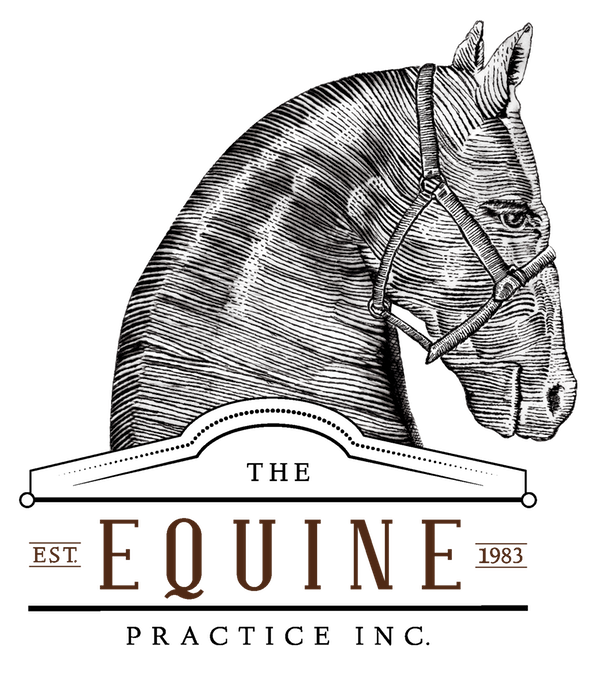Geoff Tucker, DVM, floated his first horse in May 1983 (forty years as of this posting). He has been working with horses professionally since 1973 (fifty years). Over these decades, he has seen changes in how we work with horses and all the new diseases that either did not exist in the textbooks or were much less prevalent. Unfortunately, not all the changes have been in the horses’ best interest. For example, using sedatives for minor procedures is now known to alter the gut microbiome. This unintended consequence has negative effects in many different ways on horse health.
In 2014, Dr. Tucker and Melissa Colburn opened the Horsemanship Dentistry School to train horsemen in applying horsemanship to equine dentistry. Combined, they have floated over 100,000 horses (to date). Graduates of this school who have become certified in Horsemanship Dentistry™ have been tested against the stringent standards set by this experience. But how did it all start?
In The Beginning
You should know who Dr. Tucker is before you want to listen to what he says. Many people offer expertise in every industry, especially in the horse industry. You need to know who you are spending your time with, how the concept of refining traditional equine dentistry came about, and, more importantly, why it hasn’t followed in the path of other equine dentists.
Dr. Tucker returned to Cornell’s Agriculture School in 1978 after five years working on a Thoroughbred breeding and training farm where he learned horsemanship. He had come close to death or injury several times in those five years, but great mentors helped him overcome any fears he had developed. Because of the many small series of events, working with hundreds of Thoroughbred horses, he became a student of the horse and horsemanship BEFORE returning to school to become a veterinarian. Remember, this was long before the rage of horsemanship clinics and gurus.
Returning to the academic side was exciting for studying the horse from the inside out. Anatomy, physiology, biochemistry, and organic chemistry filled his years, along with communication, genetics, calculus, and perception. The perception course was cool.
But there was nothing about horses at the undergraduate level except one course. That one course was packed with many things but nothing about horsemanship or building a good working relationship with horses. So, it is not a wonder to anyone why students graduating from agriculture, veterinary, and dentistry schools turn to sedate every horse they see before working on them.
Vet School
In 1980, Dr. Tucker became a veterinary student at Cornell University’s Veterinary College in New York. Throughout his years in vet school, nothing about horsemanship was offered. Then, during the 3rd year, Dr. Tucker started a tutoring course for vet students wanting to learn how to handle horses safely and effectively. It was packed with students wanting to do better in the clinics.
In 1983, Dr. Tucker’s mentor and professor in vet school, Dr. Jack Lowe, taught him how to place his hand inside the mouth of a horse without any drugs and without any device to keep the mouth open. He was stunned with amazement. He couldn’t believe that horse teeth went back that far! He couldn’t believe that his hand felt safe inside the crushing jaws of a horse!
Then, Dr. Tucker performed his first float. The mentor said that caring for the teeth of the horse was a very important part of their care. He believed him, but in the five years on the Thoroughbred farm, he only had seen non-veterinary dentists float horses. The vets never touched the teeth of the 200-plus horses there.
Dr. Tucker’s fascination with horse teeth was ignited. That summer, he worked with a veterinary practice and floated Thoroughbred racehorses in training from 6 am to 7:30 am Monday through Friday. During his final year in vet school, he floated horses on weekends when he could. 1984, he graduated from vet school and started his solo veterinary practice. He already had a hundred floats under his belt.
Through the years, Dr. Tucker incorporated dental care into his practice, performing hundreds of floats yearly. Yet, he wasn’t using a speculum and medicating only a few horses. He did this for 12 years.
In 1997, Dr. Tucker was invited to join the New York State Equine Practice Committee to discuss whether non-veterinarians should be allowed to float horse teeth in New York. Of course, it was illegal then, but the majority of the veterinarians on the committee didn’t care because they thought it was not a veterinarian’s job to work on teeth. Only one vet demanded that it remain in the hands of veterinarians.
Limited To Dentistry
There were two results from this. First, the vets on the committee who did not want to do the dental work on horses were also apathetic in allowing the law to change so non-veterinarians could become legal. Nothing was changed because no vet cared.
The second result was more important. As a result, in 1998, Dr. Tucker decided to limit his practice to equine dentistry. At this point (2023), he has worked on the teeth of about 80,000 horses.
In 2009, Dr. Tucker asked Melissa Colburn (Buday) to help him with the expansion of the practice. This offered an opportunity to put into words the style he had developed over the years. This style was named “Horsemanship Dentistry™,” and it is what he and Melissa teach today at the Horsemanship Dentistry School™. Passing on what he has learned over the past 40 years is now the focus of his life, bringing to the world Horsemanship Dentistry™.

